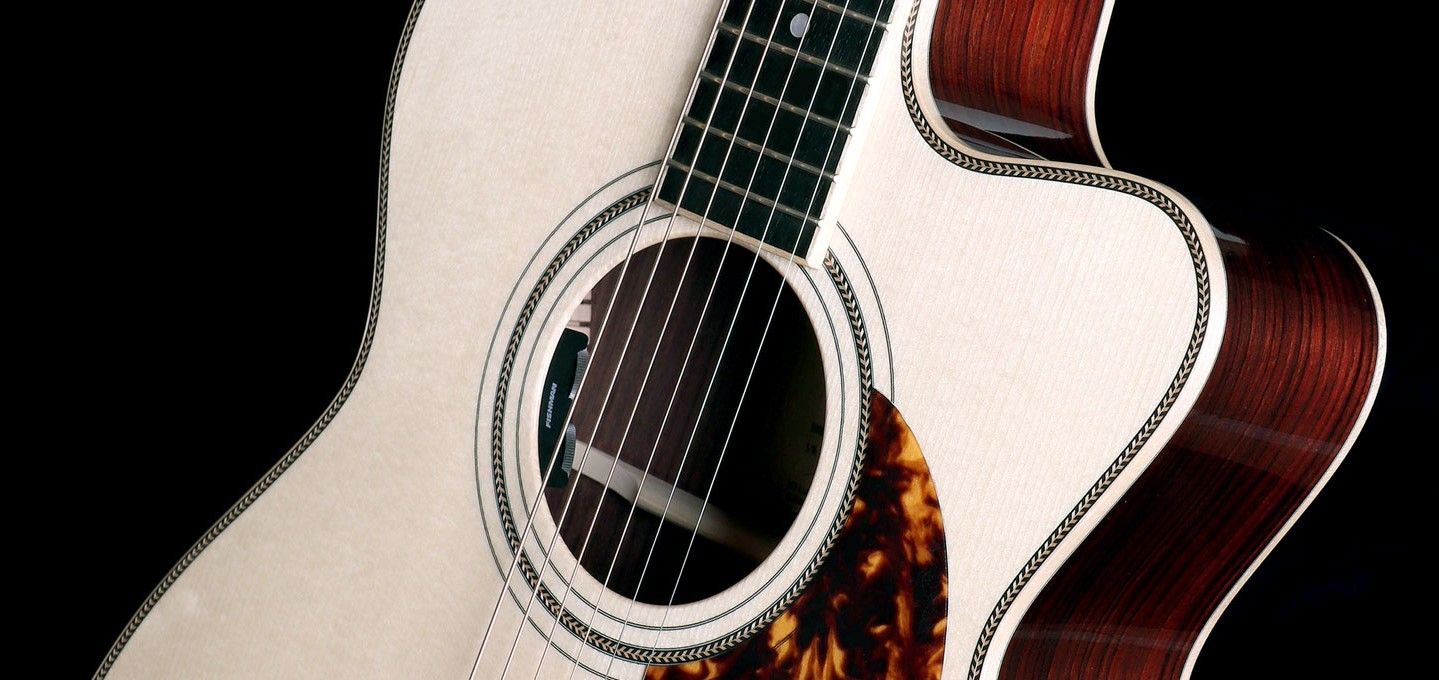How to choose your guitar
Which guitar to choose and how to choose it
Acquiring a high-quality acoustic guitar is not a decision that is taken lightly! Of course, the purchase price is an important consideration, although in the case of a high-end acoustic guitar, it is more of an investment in oneself than an expense for a musical instrument. But the most important thing is definitely finding the instrument that will be one with the guitarist that you are and that will be your extension, your means of artistic expression. At Boucher Guitars, we believe that beyond the acquisition price, there are four important factors to consider in decision-making :
The guitarist, the guitar manufacturer, the body size and finally, the tonewoods used.
Let’s review these four factors, hoping that the elements we submit to your consideration will help you make the right decision about which specific guitar you should choose.
The guitarist
The guitarist’s personality, level of musical knowledge, favorite style of music, musical talent, dexterity and attack of strings are all elements that will affect the sound of the guitar. Two different guitarists, however experienced they may be, will produce a very different sound with the same guitar and the same music. Why? Simply because the guitar reacts differently to each guitarist’s playing. Attacking the strings directly with the fingers’ skin or calluses, with the nails or a pick, will produce very different sounds in each case. The strength of the hand, the energy used, the intensity of the playing will lend a colour different from one person to another. The guitarist’s tastes and preferences, previous musical experience, the different musical styles practiced by the musician, state of mind and musical sensibility will also contribute to defining the outline, intensity, modulation and vibrations of the sound projected by the guitar. That is why, at Boucher Guitars, different models of guitars were developed considering the different types of guitarists and we are convinced to offer you the instrument that will exactly match the guitarist that you are. You play different styles of music? We can offer you as many guitars that you personally like and need, depending on the different styles you play!
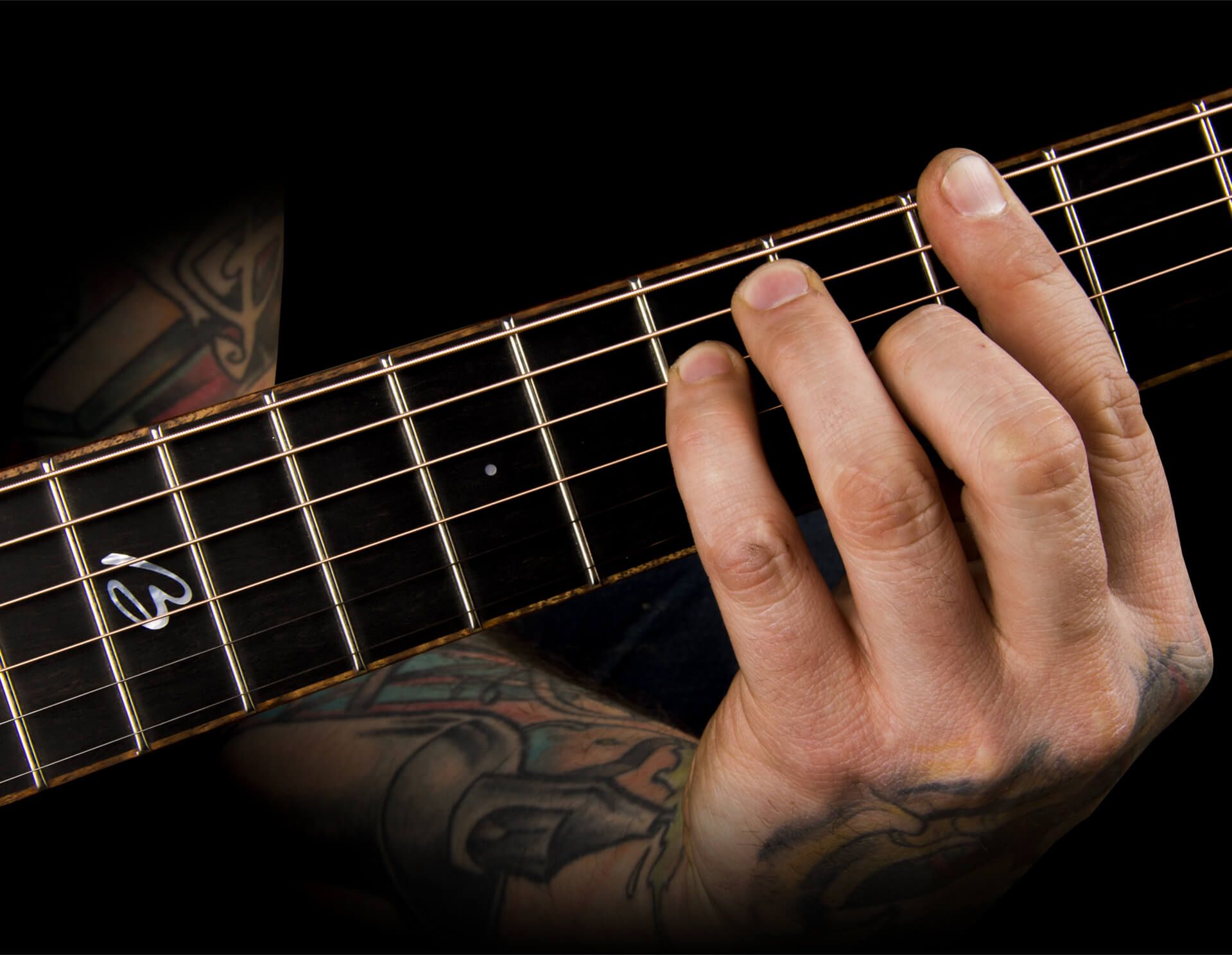
The manufacturer
At Boucher Guitars, every guitar is unique. They are handcrafted individually by our guitar builders who gradually build them, paying attention to details, and monitoring their evolution until they leave the workshop, making sure that none of them leaves unless they met our high standards of quality. Here, the guitar builder carefully chooses himself all the pieces that will ultimately become the guitar you will buy, and it is he who matches the soundboards and other components according to the specific instrument on which he works. they leave the workshop, twelve weeks after launching production, our guitars have a soul and their own personality!
For a passionate guitarist, buying a Boucher guitar is finding your soul mate!
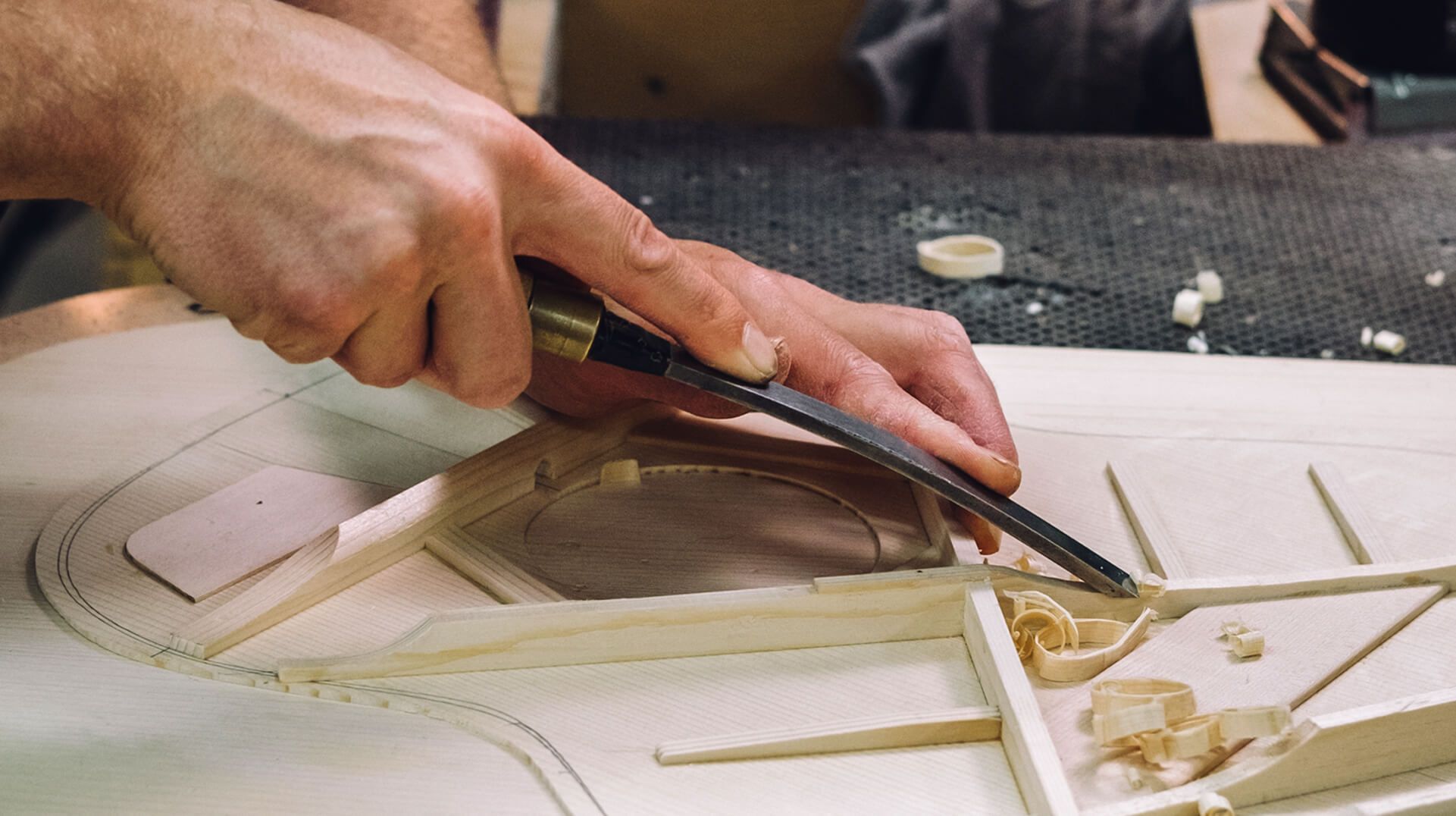
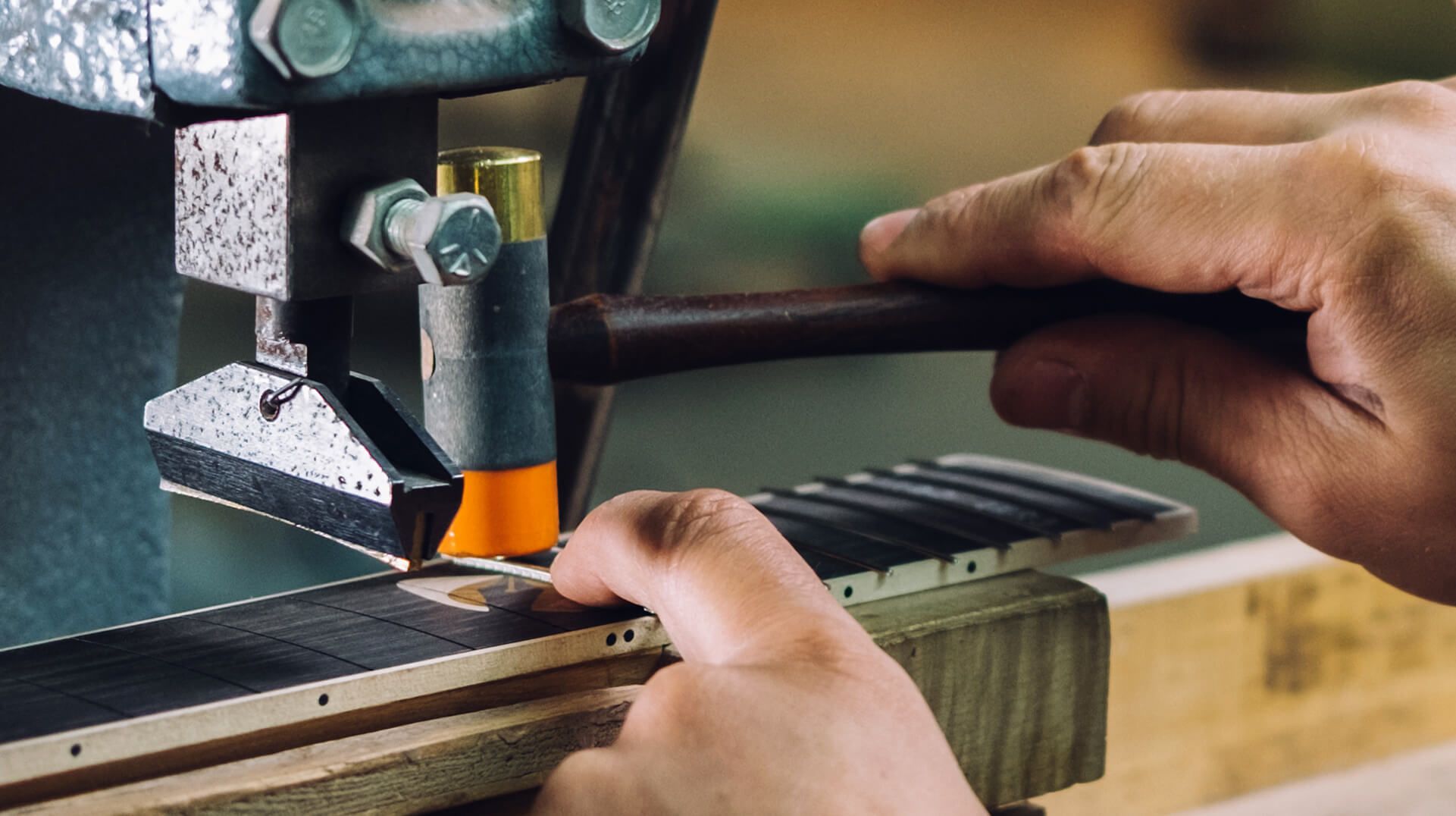
The body size
The body size is probably the element that most affects the acoustic properties of the guitar. The four variables of sound from the acoustic guitar, like any musical instrument whether string or wind, are in order: tone, tonal pitch, intensity, and sustain. The body size affects the four variables, but more particularly the most important ones, i.e. the tone and tonal pitch. As the tone and tonal pitch of the violin, cello and double bass differ in a recognizable way, so too different sizes of a guitar’s body will produce a different tone and tonal pitch.

Tonewoods
Since the body size influences the four sound variables of the acoustic guitar, but more particularly the tone and the tonal pitch, the tonewoods also influence these variables, especially the intensity and the duration of the sound produced by an acoustic guitar. Each species of wood has its own characteristics and different mass/flexibility/density ratios. These ratios subtly but significantly influence the overall tone of the guitar, much like different varieties of herbs and spices subtly but noticeably enhance the taste of your favorite dishes. To find your way around, you must compare tonewoods with a high mass/flexibility/density ratio to those with a lower ratio.
Rosewood, cocobolo and bubinga are high-density tonewoods. They provide the tone with a firm and fast attack and emit slightly more present and more crystal-clear, low and high frequencies than the low-density woods. They also increase the intensity or volume of the acoustic guitar in a perceptible way. Finally, the sustain will be subtly extended due to the more enhanced harmonics. There is general agreement that nearly half of guitarists prefer high-density tonewoods.
South American mahogany, western Canadian Bigleaf maple and koa are tonewoods with a lower mass/flexibility/density ratio. Therefore, they provide the tone with a smoother and slower attack. They also promote a hushed tone and a more appropriate balance between low, mid and high frequencies. These features generally fill the expectations of the other half of the guitarists.
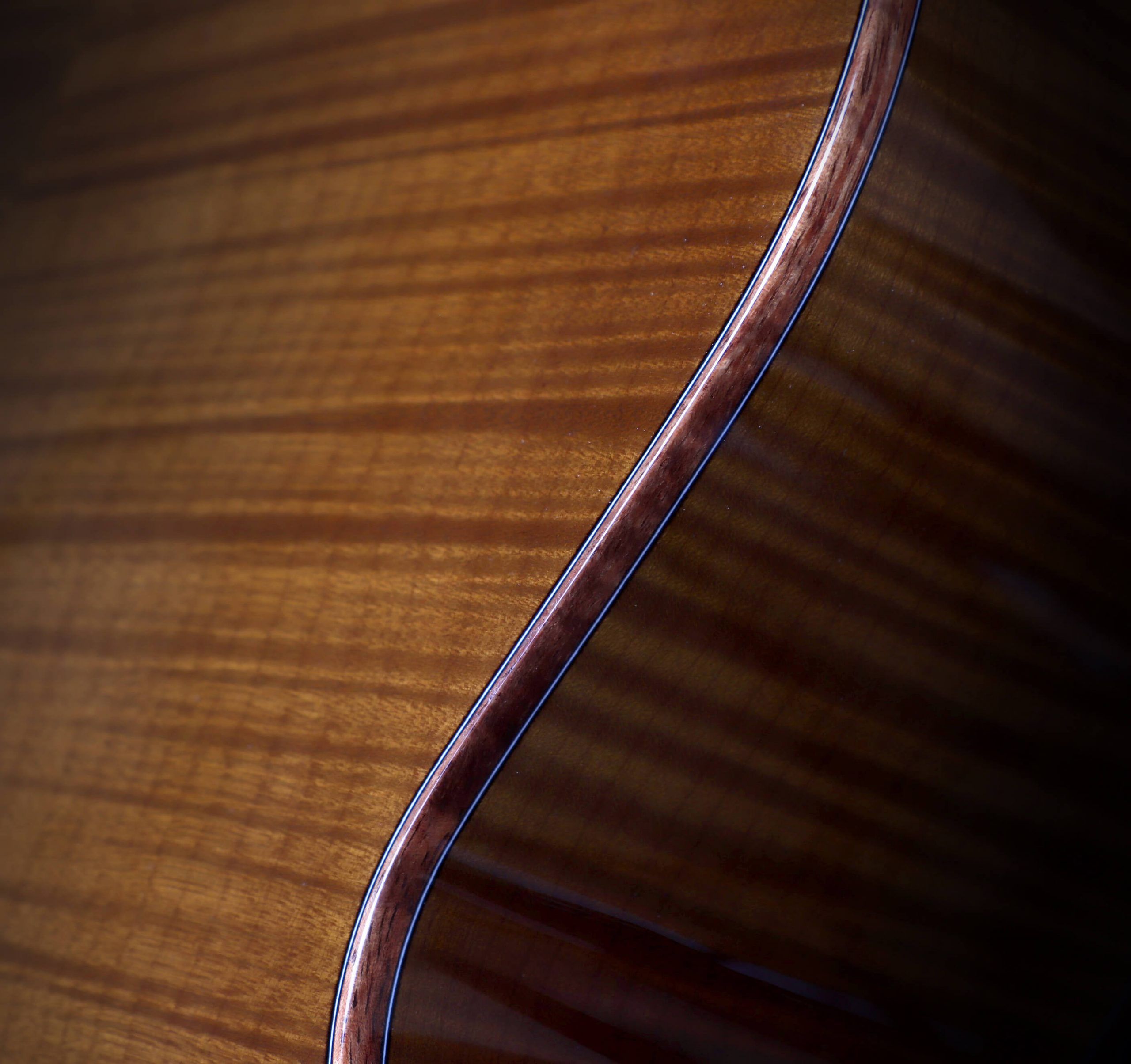
How to choose your guitar
Boucher Guitars is proud to have designed, developed, and perfected, over the past decade, models of guitars with various formats and tonewoods to meet the specific needs of guitarists in search of the highest quality acoustic guitars. The different types of guitarists will find here the guitar made of tonewood and the size required to meet their needs.
5 QUESTIONS YOU SHOULD ASK YOURSELF BEFORE ACQUIRING AN ACOUSTIC GUITAR
We suggest that you assess your needs based on the answers to the following five questions and the indications we have provided for you based on your answers. We hope to guide you in your selection.
1. ARE YOU A STRUMMING OR FINGERSTYLE GUITARIST?
The sound produced by Dreadnought or Super Jumbo bodies will appeal more to strumming guitarists, while the OMH, 000 or Parlor sizes will appeal to fingerstyle fans.
2. WHAT ARE YOUR MUSICAL PREFERENCES LIKE? DO YOU PREFER COUNTRY, COUNTRY-WESTERN AND BLUEGRASS MUSIC STYLES OR BLUES, JAZZ OR POP ROCK?
The tone of Dreadnought’s body size has literally defined the sound for country, country-western and bluegrass styles, making it the best choice for these musical styles, while the OM size’s tone will further evoke the Mississippi, the cradle of blues, jazz and rock.
3. DO YOU PREFER BALLADS OR FOLK SONGS?
The tone produced by the 000 12 fret-to-body size is more familiar to you than you can imagine. In fact, it is at the heart of the most popular ballads or folk songs recorded in the ’60s and ’70s with its very deep and rich low-mid frequencies. Feel free to choose this body size if it’s the folk style that turns you on! If, on the other hand, you are dreaming rather of a tone that will deliver the romanticism that you wish from an acoustic guitar, then you need a guitar with clear and highly articulated and focused mid-range frequencies. The Parlor 12 fret-to-body size will then likely be your preferred choice.
4. SHOULD THE FOCUS BE ON THE SOUND ATTRIBUTES OF THE GUITAR OR THE COMFORT OF PLAY?
Without neglecting the importance of the sound of a guitar, we believe that your guitar will never achieve its full potential if, ergonomically, you do not feel that it is part of you. Therefore, it is imperative to choose the appropriate body size for your morphology. Take as much the time as you need to ensure the comfort level of your future acquisition. Also pay special attention to the neck that should fit pretty well with the shape of your hand.
5. HOW DO YOU ATTACK THE STRINGS?
As a guitarist who attacks the strings directly with the skin of the fingertips rather than with the fingernails, you get a hushed sound that significantly reduces the high and crystalline frequencies and enhances the low ones. In this case, the optimal sound projection capability of the instrument is diminished when the body absorbs the impact of your skin on the strings. A guitar made of a dense tonewood such as rosewood, cocobolo or bubinga will stimulate the emission of crystal-clear sounds and accelerate the attack. In contrast, a guitar made of genuine mahogany, western Canadian maple or koa will offer a darker, softer sound and reduce the speed of the attack.
Furthermore, if you are a guitarist who plays the strings with a pick, you should know that the overall sound of the guitar will react differently depending on the thickness and material of the pick. Essentially, a thin pick delivers a thin, crisp and crystal-clear overall tone, while a thick pick produces a fat, dark and muffled tone. It’s up to you to test the different picks available on the market and their variations in materials and shapes according to the overall sound you’re looking for! If you’re looking for crystal-clear overall sound and fast attack, hit the strings of a guitar made of rosewood, cocobolo or bubinga with a thin pick. On the other hand, if you are looking for a darker or more muffled sound, attack the strings of a guitar made of genuine mahogany, western Canada Bigleaf maple or koa directly with the skin of your fingers.
